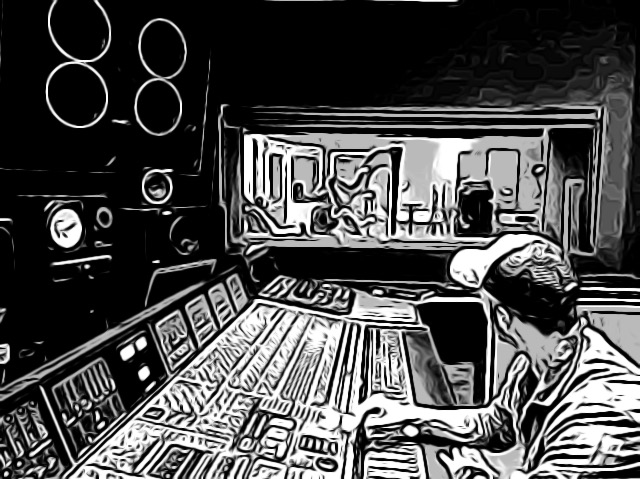A major epiphany has taken place, itself the result of a workflow realisation. For a while I have been struggling with the following conundrum: How to know when to stop mixing the samples? As a samplist, I understand whether a source functions effectively in the context of sample-based Hip Hop when I hear it as part of the process, as part of the production layering. When trying to create a phonographic moment outside of this context, albeit ultimately for it, I have found it difficult to ascertain how complete such a moment may be. This may relate to a number of musical or sonic variables. For example, I may question how tight the rhythm should be between a number of performed elements; or whether the sonic footprint achieved with the mix is sufficiently coloured, vintage, or record-like. A looser rhythm may sound effective when embedded within a new beat. This is hard to judge outside of the beat-making process. Similarly, the mix sound achieved at any point is difficult to evaluate in terms of its usefulness to the new beat-making context.
Previously, I would have made an informed judgement, complete the editing, arrangement and mixing process based on this guess, then bring the results into a sampling drum-machine, chop them up and hope for the best. Some of the results would be quite aesthetically pleasing and, as a result, facilitating a sample-based compositional process. Other times, when hearing them as part of this process, I would wish that I had done different things to them, both in terms of timbre and rhythm/musicality.
Furthermore, the long jams committed would render it difficult to judge what the best moments are. At one point I felt like I should start producing beats on the drum-machine which should run parallel to the recorded performances, at the same time trying vocals or freestyling on top of it all. This could demonstrate which parts of the long recorded performances or jams would best suit the beat, but also inspire vocal or lyrical ideas.
It would also highlight discrepancies in timing or the level of sonic appropriateness in the mixing of the samples. The breakthrough came about when I had the idea to run the MPC X drum-machine in parallel to Ableton Live, using the relatively new link functionality now available on both (which utilises a Wi-Fi or Bluetooth connection to synchronise a number of software or hardware musical environments with each other). Of course, this is something that could have been achieved with various forms of MIDI synchronisation in the past (which has been available for a long time), but it was when experimenting with this new function on the MPC X that this elegant solution became creatively clear and gave way to a practical epiphany.
The software and hardware could now run as two parallel streams, allowing for programming of suitable beats live on the drum-machine whilst auditioning the recorded performances playing back from the software. Soon, I found myself working in turns on drum programming on the MPC and production of the live performances on the DAW. This became seamless, the two streams of audio inspiring and affecting each other, musically (rhythmically) and in terms of timbre.
Hearing the to-be-sampled content under – so to speak – the beat, created a completely new perspective for the evaluation of its suitability, but also the suitability of the beat being made to work with the samples. This way of working became so effective and inspiring that it pushed my mixing workflow and results to a new standard. I believe the reason for this draws from my experience of listening to source material (albeit made by others) very much in such a context. Therefore, critically listening to my own source material in this way provided clarity about how it should be shaped in order to function in a comparable context. I have found this comfort zone ideal as a frame that empowers me to mix recordings in a committed, creative, brave and enhanced fashion. Effectively, making records within records. Areas of mixing where I can hear notable development in my results are particularly characteristics such as expanded depth staging via the use of committed spatial effects, and extended height, definition and separation via the use of confident equalisation. In fact I am experiencing progress in my mixing ability on the whole, beyond the sample-based focus on hand. By naturalising my context and sonic environment through facilitating a familiar process I have provided a more effective frame than that of building independent phonographic moments. I wonder whether this may extend to a pedagogical insight. Could this context be useful to students who have experienced older forms of music predominantly as featured within contemporary sample-based forms? Could this be beneficial as a frame or context for the exploration of vintage or classic mixing/production techniques for a younger generation?
